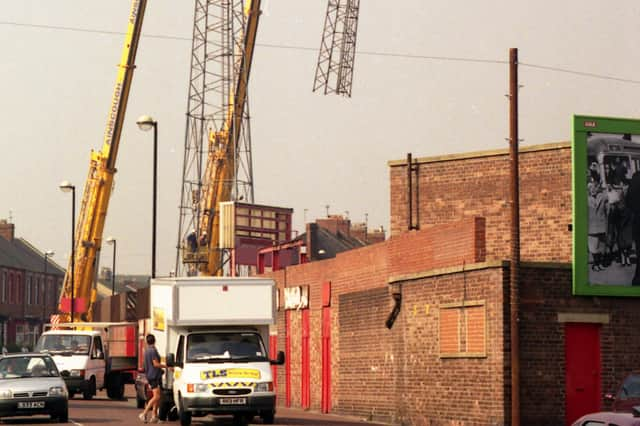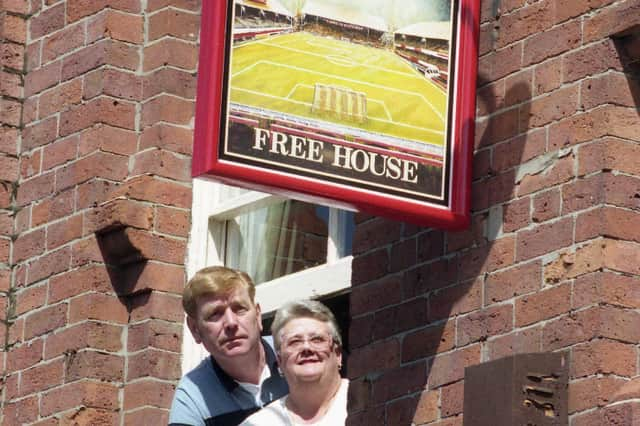This was the summer of 1997 and the 99-year-old stadium faced its last moments at the hands of diggers.


Bulldozers meant the end was in sight
A week later, bulldozers began work on other parts of the ground as a piece of history was removed from Sunderland.
East Boldon-based G O’Brien did the work for Wimpey Homes, which was due to begin building 130 homes on the site in late summer that year.


It was an emotional moment for George Forster, vice-chairman of Sunderland AFC Supporters’ Association.
‘A lot of supporters thought this moment would never come’
He said at the time: “A lot of fans thought over the years that this moment would never come – some hoped it would never happen.’


“It’s sad to see the old ground go because of the memories it holds for fans. But the club had to move on and the new stadium is very exciting.”
The supporters’ association shop on Roker Baths Road closed, and volunteers were busy setting up in their new base at Monk Street, nearer the new stadium.
The legend lived on
George said: “I could have wept when we left Roker Baths Road, but just like it’s a new beginning for the club, we had to move to be closer to Wearmouth.”
Meanwhile, the legend of Roker Park lived on at a Wearside pub.
A new sign was made for The Cambridge, on Fulwell Road, showing the famous old ground in its floodlit glory.
Roker Park in art form
Managers Norman Pounder and Margaret Calvert said they were keen to see Roker Park in the new artwork. A company in Birmingham did the sign.


The couple had been at The Cambridge for four years and built up a collection of old football photographs, which were on the walls of the bar.
Do you have a piece of Roker Park memorabilia that you treasure? Tell us more by emailing [email protected]
